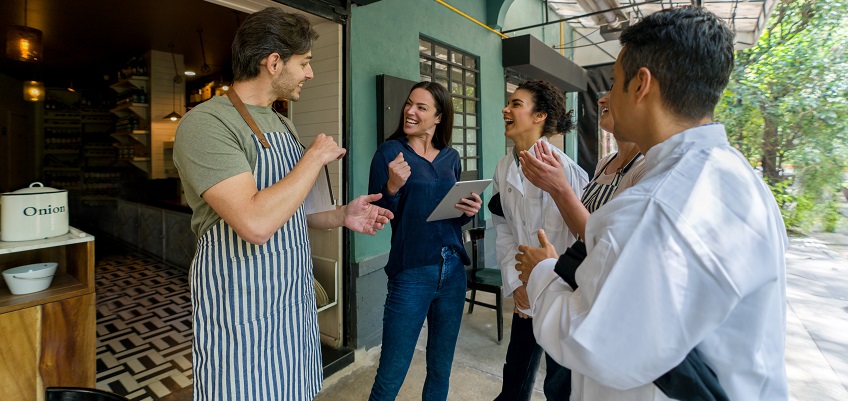Are you prepared for a natural disaster?

Emergency drills and simulations can help employees implement a plan to step through each stage of a disaster.
Even with a thorough disaster response plan, a restaurant team can feel panicked and caught off guard when a natural disaster strikes. That’s where emergency drills and simulations can help, giving employees an opportunity to step through each stage of a disaster and practice implementing their plan.
“There is no premium on preparedness,” says Anton Nicholas, managing partner for ICR, a strategic communications and advisory firm that guides restaurant clients through crisis communications, including disaster simulations. “The more you prepare, the more you anticipate, the more you stress-test your systems, the better off you're going to be,” Nicholas says.
Here are seven tips on how to run an effective simulation:
1. Start with a plan. Come into a simulation with a comprehensive disaster plan, delegated roles, and a toolkit containing checklists and talking points you want to convey during an emergency practice drill. Team members should familiarize themselves with the plan before the simulation and understand their roles. A simulation might reveal ways to tweak your plan, but it is not the time to start from scratch. For advice on how to develop a natural disaster response plan, check out the National Restaurant Association’s disaster preparation guide, “Always Ready: Natural Disasters.”
2. Enlist the key players. Bring together top personnel to work together through the disaster simulation as a team. Your crisis management team might include company execs and regional managers as well as leaders from human relations, supply chain management, legal, finance, PR, IT, marketing and internal communications. Nicholas recommends meeting in person to encourage engagement, communication and teamwork. “It's important for everyone to learn from each other in terms of what they’re thinking, what they need to know in order to manage their part of the process,” he notes.
3. Set aside the time. Reserve about four hours for a thorough simulation, Nicholas advises. You’ll want time to go through all the possible stages, including storm warnings, evacuation orders, electricity loss, damage assessment and reconstruction planning. Build in time to discuss any issues that arise and to review key takeaways. Consider contracting a crisis communications firm to oversee the simulation and manage the time. Run through an entire simulation at least annually.
4. Test out different situations. Nicholas compares a simulation to a “choose your own adventure” book that offers multiple scenarios. Perhaps play out how you would respond if a few locations were impacted by a natural disaster. Next, practice your protocols if headquarters needs to be evacuated. You can also adjust the simulation to the type of disaster based on what’s most prevalent where your restaurants are located. But don’t worry about practicing every type of natural disaster that restaurants might face. “A lot of the process of communicating around the natural disaster event is pretty similar,” says Nicholas, whether it’s a flood, winter storm or a hurricane.
5. Prepare for the worst. “We base simulations on actual events in part, but we take it to the extreme to make sure that everybody is prepared,” says Nicholas. Picture a Category 5 hurricane devastating multiple units and headquarters. By considering the worst-case scenario, “it makes it easier to manage all the lesser challenges that you might face,” he notes.
6. Take on the tasks. A simulation should be more than a cursory overview of the steps and responsibilities. Really walk through every step of what your crew should do. Understand that practice creates “muscle memory” that will supersede panic in the face of a crisis.
7. Take advantage of the calm before the storm. Weather forecasters typically predict hurricanes a couple days in advance. Use this lead time for refresher phone calls to ensure that everyone is prepared with the lessons learned from your latest disaster simulation.
The National Restaurant Association guide “Always Ready: Natural Disasters” provides tips on how restaurants of all sizes can prepare, withstand, and recover from natural disasters. Download your free copy here.